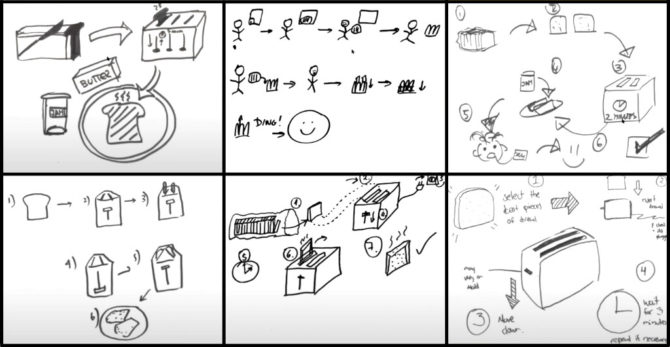Meet the Designer: 3 Things to Think About with Creative Guru Jason Durham
“Always evolve.”
That was the advice Jason Durham handed down to Graphic Design & Interactive Media (GDIM) students during this term’s virtual installation of Meet the Designers.
Hosted by GDIM Program Director Pheinixx, the once-a-term event presents a unique opportunity for Graphic Design students to gain insight into the real world of creative professionals and to be inspired by their diversity of design ideas and approaches.
“We run these to give all of our students, faculty and the entire program an opportunity to glean some more insight from different perspectives about what it’s like to be a professional designer,” Pheinixx explained.
“The format that I give to all our guests is very open and it’s based around ‘3 Things’ that they would like to share – and it’s entirely up to them. I don’t even have any idea what anyone’s going to say, so it’s always a very exciting and fun event for me, too.”
Durham, who serves on the Program Advisory Committee for both Toronto Film School’s 12-month On-Campus Graphic Design & Interactive Media program and its 24-month Online Graphic Design & Interactive Media program, has “lived, breathed, and eaten” all things design for the last 15 years. Over the course of his career thus far, he has been successful in roles ranging from creative and art director, to senior designer and educator – all while plying his craft with international agencies, professional service heavyweights, as well as public/private enterprises.
During his hourlong webinar, Durham shared the following ‘3 Things to Think About’:
1) Know thyself
The key is to know thyself. Do you have a clear understanding of who you are? Of what your passions are, and your strengths and weaknesses? That you can say with no ambiguity, ‘I am awesome at this?’ Know thyself.
How are we able to connect with our audience? Our clients? Our users? How can we say we know what you want, that we know how you think, how you choose, how you act, if we go home and look in the mirror and say ‘Who are you?’
Once we understand who we are as an individual, and that’s different for everyone, obviously, but once we have an understanding of that, then it’s much easier to step into the shoes of someone else. And in our context today, that’s our clients, our team, the brand we work for, and their users or clients or customers. Now we can make, now we can create, now we can build something amazing.
But only if you know thyself. And once you get there, you’ll find that the pathway to creating some amazing work for amazing companies and clients just doesn’t stop there.

2) Draw toast
You’re probably thinking, ‘Draw toast? What are you talking about?’ This is an exercise. Let’s say we are in a classroom and I give each of you a piece of paper and here are your instructions: draw a picture of how to make toast…No words, no numbers or letters, just pictures. Do you have in your mind what you would draw first? Would it be a car driving to the store to get the bread? Would it be the refrigerator? Or would you just start with a piece of bread? Now, keep thinking – what would be next? How many steps would your individual diagram/pictogram/infographic be?
It’s an interesting exercise for those of us who are claiming that we understand a process and that we’re able to produce the solution for someone that doesn’t. There’s a simple reason why point #2 is ‘draw toast’. What I would like to encourage you folks to do is, instead of just going in your mind with what might be the most obvious, think of all of the opportunities. Some people drew a campfire with a stick and a piece of bread on top. That’s toast, too.
My point is this, the act of making ideas visible, or representing situations as visible, interconnected systems composed of nodes and links…can convert unproductive discussions into effective working sessions that foster clarity, engagement and alignment.
3) Don’t be a designer, think like a designer
What do we mean by this? Henry Ford said it best when he said, ‘If I’d asked my customers what they wanted, they’d have said a faster horse.’ When you become the designer, do you want to be…thinking about the solution in terms of what’s already there, or what nobody has thought of? Ask yourself, has there ever been another iPhone? Has there been another Toyota Prius? Those designers of those products decided they were going to do something very different. They were not just going to design a faster horse.


